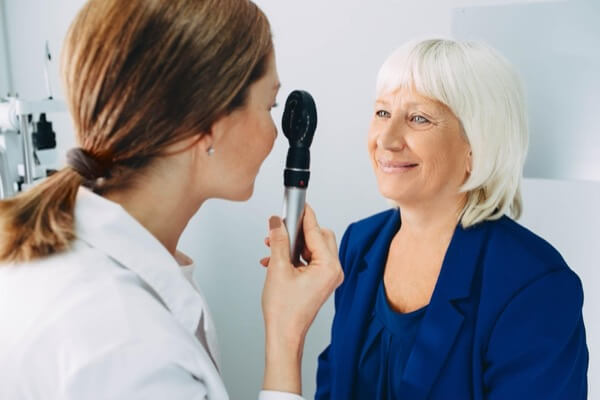Dry Eye Syndrome
A Therapeutic Overview by Dr. Georgia Crozier, Medical Director

Dry eye syndrome is a common condition around the globe. There are at least three million people diagnosed each year in the United States. It often occurs as a result of decreased tear production with age.
The symptoms of dry eye are extensive and diverse within the adult population. Common complaints from patients may include burning, itchiness, foreign body sensation, excessive watering, redness, and light sensitivity. When a patient presents with a dry eye, the optometrist may notice changes on the front surface of the eye in the tear film, swollen eyelids, and debris buildup on the eyelashes. In these patients, vision may be reduced and can often improve temporarily with repeated blinking.
Other common causes include refractive surgery, which can create less tear production, as well as the use of medications, such as antihistamines, antidepressants, diuretics, and beta blockers, which reduce mucus production. Links have been drawn to excessive screen use, on a computer or cellphone, as people tend to blink less while using their device. Systemic change in hormones deriving from pregnancy and menopause as well as changes in environmental conditions, such as increased wind and low humidity, are all common causes of dry eye syndrome.
Therapeutic Area
Treatment Options
- Artificial Tears
- Prescription Tear Stimulators
- Oral Medications
- Punctal Plugs
Ancillary Supply Chain Insights
Ophthalmologic studies can vary greatly in supply and equipment needs, depending on the indication being studied. An ophthalmology CTASC looks at:
- Direct Ophthalmoscope, Occluder, Optical Coherence Tomography (OCT), Pachymeter and other surgical equipment needs
- the best options for cuffs, scales, and blood draws
- testing and diagnostic testing equipment
- organizational materials for study-related documents and IP
Ancillare offers specialized support for complex clinical supply chains. From consultative support such as the Ancillare Innovation Team, to technology resources such as the Ancillare Digital Communications Platform, we help Sponsors navigate the challenges of sourcing and managing ancillary supplies for clinical trials in ophthalmology and all therapeutic areas.
CTASC™ Services Provided
We manage ancillary supplies for clinical trials in ophthalmology through:

